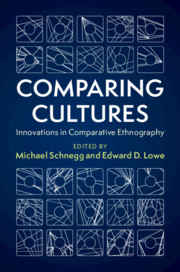Book contents
- Comparing Cultures
- Comparing Cultures
- Copyright page
- Contents
- Figures
- Tables
- Contributors
- Introduction
- Part I Binary Comparisons
- Part II Regional Comparisons
- Part III Distant and Fluid Comparisons
- 7 Best, Worst, and Good Enough
- 8 Research across Cultures and Disciplines
- 9 Global Sport Industries, Comparison, and Economies of Scales
- Index
- References
8 - Research across Cultures and Disciplines
Methodological Challenges in an Interdisciplinary and Comparative Research Project on Emotion Socialization
from Part III - Distant and Fluid Comparisons
Published online by Cambridge University Press: 08 May 2020
- Comparing Cultures
- Comparing Cultures
- Copyright page
- Contents
- Figures
- Tables
- Contributors
- Introduction
- Part I Binary Comparisons
- Part II Regional Comparisons
- Part III Distant and Fluid Comparisons
- 7 Best, Worst, and Good Enough
- 8 Research across Cultures and Disciplines
- 9 Global Sport Industries, Comparison, and Economies of Scales
- Index
- References
Summary
This chapter reflects on the methodological problems within a collaborative research project involving anthropology and developmental psychology. The project studied relations between child-rearing goals, emotionally arousing child-rearing practices, and the socialization and ontogenetic development of emotions in three different contexts (Indonesia, Madagascar, and Taiwan). I first discuss which demands were linked with the theoretical perspectives and methodological standards of the two disciplines. I then reflect on the problems encountered when trying to apply the same methods in all three contexts. One of the challenges for this interdisciplinary project was the differing kinds of empirical data gathered because of the need to adapt methods to local conditions. We needed a productive way to work between the methodological priorities of each discipline. Therefore, I designed a methodology that acknowledges the unique methodological advantages of anthropology – long-term field research, participant observation, using an explorative approach – while simultaneously making it possible to achieve theoretical and methodological equivalence in controlled cross-cultural comparisons.
Keywords
- Type
- Chapter
- Information
- Comparing CulturesInnovations in Comparative Ethnography, pp. 180 - 200Publisher: Cambridge University PressPrint publication year: 2020
References
- 1
- Cited by



